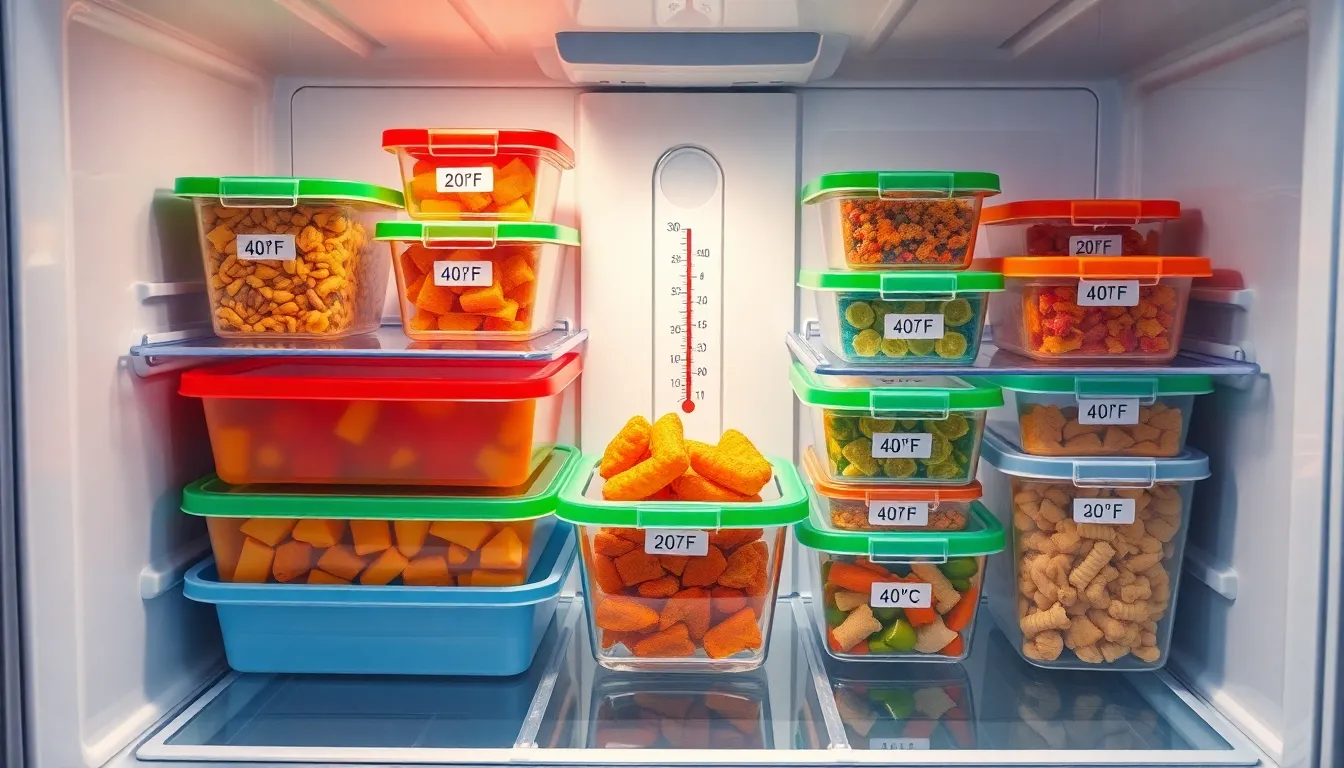
How Long Is Leftover Chinese Food Good For? Essential Tips to Keep It Safe and Tasty
Leftover Chinese food can be a culinary treasure, but how long can it sit in the fridge before it turns into a science experiment? No one wants to meet their sweet and sour chicken after it’s gone rogue. Understanding food safety is crucial for keeping those delicious leftovers safe and tasty, so they don’t end up in the dreaded trash can.
Navigating the world of leftover Chinese cuisine doesn’t have to be a guessing game. With a little knowledge, you can savor that last bite of lo mein without worrying about what might be lurking in the container. So grab your chopsticks and let’s dive into the shelf life of your favorite takeout dishes. After all, who wouldn’t want to enjoy their meal twice?
How Long Is Leftover Chinese Food Good For
Leftover Chinese food offers convenience and a great taste, but understanding its safety is crucial. Proper storage and awareness of various factors can extend the enjoyment of these meals.
Common Types of Chinese Food Leftovers
Popular leftover Chinese food includes fried rice, noodles, dumplings, and various meat dishes. Fried rice often contains vegetables and proteins, while lo mein features thick noodles mixed with vegetables and sauces. Dumplings, filled with meats or vegetables, are versatile. Sweet and sour chicken or beef with broccoli often find their way into the fridge. Each dish has distinct ingredients affecting how long they remain safe to eat.
Factors Affecting Shelf Life
Storage temperature plays a significant role in shelf life. Leftovers should reside in the fridge within two hours of cooking for optimal safety. Containers must seal tightly to prevent moisture loss and contamination. It’s also essential to consume these foods within three to four days for best quality. When left unrefrigerated, bacteria can grow rapidly, leading to foodborne illnesses. If unsure about a leftover dish, a quick smell test or visual inspection helps gauge its safety.
Proper Storage Methods

Proper storage extends the life of leftover Chinese food. These methods ensure safety and taste remain intact.
Refrigeration Tips
Ensure the fridge temperature stays below 40°F (4°C) for optimal safety. Store leftovers in airtight containers to minimize exposure to air. Label containers with the date for easy tracking. Refrigerate leftovers within two hours of cooking to prevent bacteria growth. Consume leftovers within three to four days. Check for any off odors or unusual colors before eating.
Freezing Techniques
Freezing allows for longer storage times. Use freezer-safe containers or heavy-duty freezer bags to prevent freezer burn. Split meals into individual portions to make reheating easier. Make sure to label each container with the date and contents for quick identification. Leftovers can remain safe frozen for three to six months. Defrost in the fridge rather than at room temperature to maintain quality and safety.
Signs of Spoilage
Recognizing signs of spoilage helps ensure safety when consuming leftover Chinese food. Observing visual indicators and performing smell and taste tests are essential steps.
Visual Indicators
Discoloration often signals spoilage in leftovers. For instance, sauces may darken, while vegetables lose their vibrant color. Mold growth is another clear sign; any fuzzy spots or off-color patches indicate it’s time to discard the food. Changes in consistency, such as excessive sogginess or separation of ingredients, can also indicate spoilage. Always trust your eyes; if something looks questionable, it’s best to err on the side of caution.
Smell and Taste Tests
Foul odors typically reveal spoilage; spoiled food may emit a sour or rancid smell. Fresh leftovers should have pleasant aromas consistent with their original flavors. A small taste test can also offer clues; if the flavors seem off or unpleasant, it’s advisable to throw the food away. Avoid consuming food that smells or tastes strange, as these could indicate potential health risks. Always prioritize safety when determining whether to enjoy those leftovers.
General Guidelines
Proper storage of leftover Chinese food maximizes enjoyment and safety. Awareness of recommended storage durations and reheating practices aids in preventing spoilage.
Recommended Storage Duration
Leftover Chinese food remains safe in the refrigerator for three to four days. Fried rice, noodles, dumplings, and meat dishes all adhere to this guideline, as ingredients affect shelf life. Ensure storage takes place within two hours of meal preparation to maintain quality. If leftovers include sauces, those can impact how long food stays fresh. For longer preservation, freezing is an option; appropriately stored food remains safe for three to six months in the freezer.
Reheating Best Practices
Before reheating, it’s essential to check for signs of spoilage. Thoroughly reheat leftovers to an internal temperature of 165°F (74°C) to kill any harmful bacteria. Using a microwave or stovetop can both be effective methods. Microwaving might require stirring halfway through to ensure even heating. Stovetop reheating offers control over texture, especially for noodles and rice. Once reheated, leftover food should be consumed within one to two hours to guarantee safety.
Conclusion
Leftover Chinese food can be a delightful treat when stored and handled properly. By following the recommended guidelines for refrigeration and freezing, individuals can enjoy their favorite dishes safely. It’s crucial to monitor for signs of spoilage and trust one’s senses when assessing food quality.
With proper care, leftovers can be a convenient and tasty option for meals throughout the week. Emphasizing food safety ensures that enjoying takeout doesn’t come with unnecessary risks. By prioritizing storage techniques and being mindful of expiration timelines, anyone can savor their leftover Chinese food without worry.



